75 Ways How to Lower Electric Bill
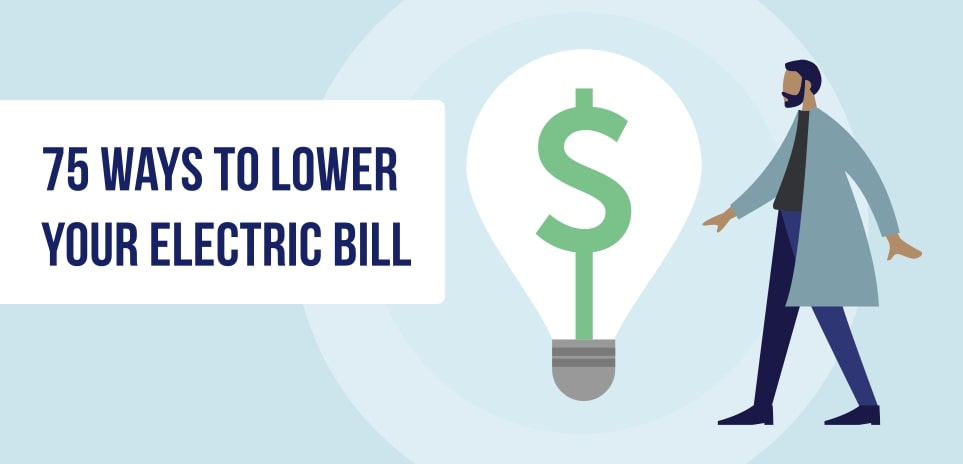
We all depend on electricity for just about everything we do in our lives. Whether it is our cell phones, televisions, computers, refrigerators, microwaves, air conditioners, or WiFi routers, we are all heavily reliant on the current running through our homes that so wonderfully allows our gizmos and gadgets to operate.
With all of our electronics plugged in or in use all at once, and for long stretches time, it is no wonder that our electric bills are high. And because of the ever-increasing rates with which we use this utility, as well as the steady cost increases we incur year after year, it seems that we are all in pursuit of ways to lower our electric bills or at the very least, save a few pennies.
Given how much we depend on electricity at home, at work, and even at play, folks have become familiar with some of the more well known ways to lower their electric bills. And while realistically, there are probably hundreds of ways to do this, we hope that the many tips we have listed below get you closer to that goal. With a bit of science, creativity, common sense, and dedication, you can learn how to lower your electric bill in your apartment, house, or even at work.
Kitchen and Household Appliances
1. Use energy-efficient appliances.
Appliances built with energy-saving in mind use less electricity in order to work. The more energy-saving devices you have, the more money you save.
2. Keep your hot water tank insulated.
While newer hot water tanks are generally insulated, older tanks are not. By using a specially designed blanket wrapped around the outside of the tank, you can keep the heat in and decrease the amount of energy and electricity that is used. The easiest way to determine how well your tank is insulated is by touching it. If it is hot to the touch, you need better insulation.
3. Lower your water heater’s temperature.
By lowering the temperature of your hot water heater, even if by a few degrees, you can save significant cash. This is the appliance that heats the entire water supply in your home after all, so savings really add up.
4. Drain sediment from water heaters.
Sediment is the mineral gook that separates from water over time. The more sediment build-up, the harder your tank has to work. Tanks that work harder than they are designed to break and end up needing to be replaced earlier than expected.
5. Make sure your water heater is working the way it should.
In addition to insulating your tank, lowering its set temperature, and getting rid of the sediment and residue that gather on the bottom, make sure your water heater works the way the manual says it should. Check for leaks, tears, and other imperfections to achieve this goal as well.
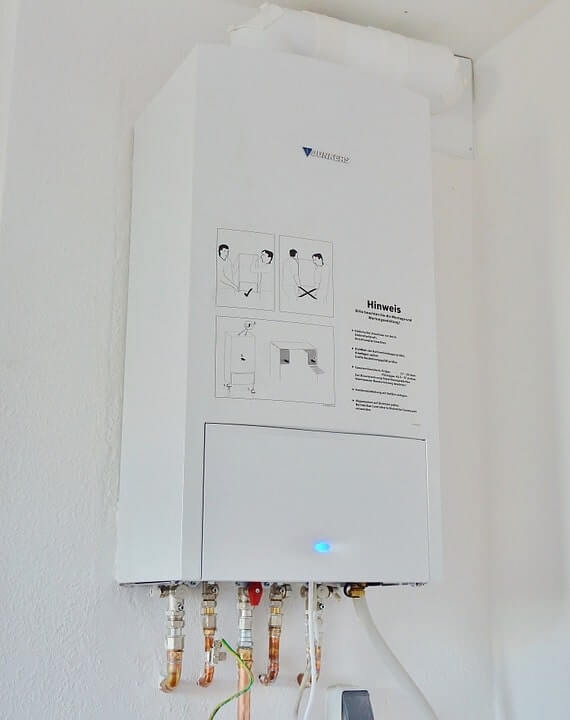
6. Ditch the water heater and get a tankless one.
Tankless heaters work on-demand, allowing you to save money by activating the heating element only when you turn the water on.
7. Always change your air conditioning air filters.
Your AC’s air filters get rid of impurities that allow clean, cool air to flow. Filters that are not clean or remain unchanged for too long, tax the air conditioner itself, making it that much harder for it works efficiently and effectively.
8. Clean your refrigerator’s condenser coils.
Refrigerator condenser coils are tasked with making sure that your refrigerator’s cooling and heating system work effectively. These coils get dirty pretty quickly because they are positioned on the bottom, back of the appliance, and are often forgotten. If the coils are not regularly cleaned however, your refrigerator has to work much harder to do its job which causes your electricity bill to go up.
9. Line or air dry your laundry.
This may not be a good tip for how to lower your electric bill in the winter, but it’s a great solution for warmer months. And this probably speaks for itself, but let’s face it—using a dryer makes life a lot simpler and makes our laundry all warm and toasty. If you want to save on your electric bills, though, air dry your laundry and forego the warm and toasty.

11. Always wash and dry a full load of laundry.
By washing and drying as much as your machine can handle, you reduce the frequency with which you need to use your machines.
12. Turn off the heated dry setting on your dishwasher.
You will save money if you allow your dishwasher to simply dry your dishes without heating the air that does so.
13. Install a dimmer switch on your lights.
Dimmer switches allow you to turn the lights down so they are not operating at full power
for longer than necessary.
14. Keep your fridge and freezer full, but not crowded.
When you keep your refrigerator and freezer full, but not stuffed, the food itself keeps the cold air in and acts as insulation. That translates into a refrigerator that does not have to work harder than it should which helps to lower your electric bill.
15. Clean the lint trap in your dryer.
The cleaner the lint trap, the better your dryer works. Conversely, full lint traps force your dryer to work harder.
16. Do not use the dry heat feature on your washing machine.
The less extra heat you use, the lower your electricity bill.
17. Place dryer balls in the dryer to speed up drying time
While not everyone is a fan, dryer balls can speed up the drying process so that you do not need your machine to be on for a full cycle.
18. Turn off the stove off a few minutes before food is ready.
The heat buildup in the oven will complete the cooking process, allowing you to turn off your stove a few moments before the recipe tells you to.
19. Plug electronics into a surge protector.
By making sure you have protective measures in place to prevent a surge of power or electricity, you minimize risk of malfunctioning electronics and devices, and temper the amount of electricity you use.
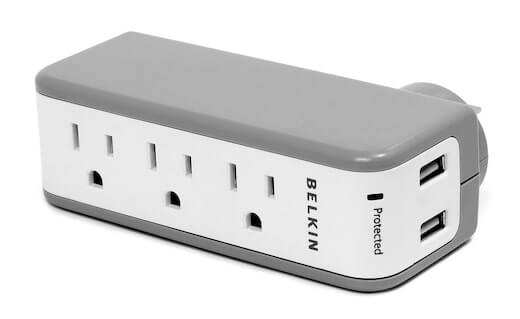
20. Minimize condensation in the refrigerator by storing cool, covered items only.
Do not put hot food, especially with the lid off, in your refrigerator. The condensation and heat make the fridge work harder than necessary to keep contents cool.
21. Put extra freezers and refrigerators in areas that maintain consistent temperatures.
Rather than your garage or an outdoor area, keep extra freezers and refrigerators in the basement of your home.
22. Cook faster by keeping the lids on your pots and pans.
The quicker you cook, the less time your burners need to be on, the less heat is generated throughout the house.
23. Use the microwave instead of the oven.
Gas stoves use more energy, which translates to overall electricity usage, than microwaves. If you want to lower that electric bill, opt for the microwave.
24. Weatherstrip your windows.
By keeping cool air out, your heating unit will not have to work as hard. Same goes for the summertime when the air conditioner is on.
25. Cook with glass instead of aluminum pots and pans.
Glassware contains heat better and longer than aluminum, and therefore decreases the amount of energy expended. In turn, this translates to lower electricity bills because there’s less heat in the air. An added advantage? Food cooks quicker in glassware.
26. Keep your flue closed.
Whether you use your chimney or not, keep your flue clean. If you do not use it altogether, close the flue in order to keep cold air and debris out.
27. Keep your windows clean.
Believe it or not, the sun will illuminate and heat up your home more efficiently through clean windows. The more dirt that is there, the less surface area the sun will be able to make use of.
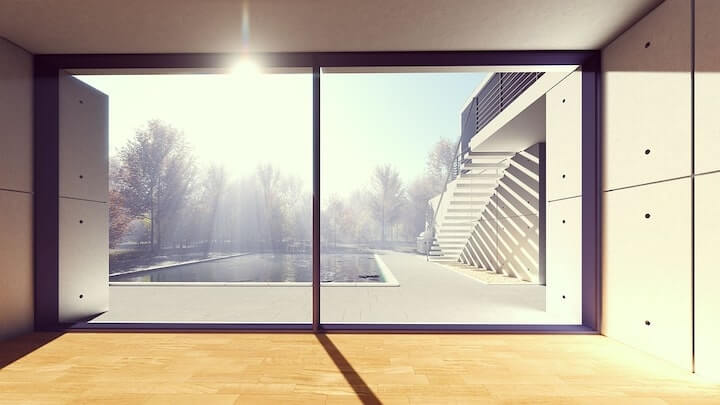
28. Turn off the lights.
You may have heard this as a kid, but it seems mom and dad had it right. Turn the lights
off in rooms you are not using. Simple!
29. Open the windows.
Want to keep the air conditioner off? Open the windows on breezy days so natural air can flow throughout.
30. Close the windows.
Want to keep the heater off? Keep those windows closed.
31. Turn off the AC and use fans.
Fans pull far less electricity than HVAC systems.
32. Do your dishes by hand.
You save electricity when you forego using the dishwasher.
33. Do not preheat the oven
Though many recipes tell you to preheat your oven, in truth, doing so uses a lot of electricity with very little benefit. In fact, preheating does little to nothing to enhance dish preparation.
34. Buy ice instead of using the ice maker in your fridge.
Ice makers using constant electricity and emit lots of heat. Make some the old fashioned way or buy bags of ice at the market.
35. Decrease or limit ironing time.
Irons emit a lot more energy than we realize, so it is best to either do as much ironing at once, rather than spreading it out through the week, or skip the ironing altogether.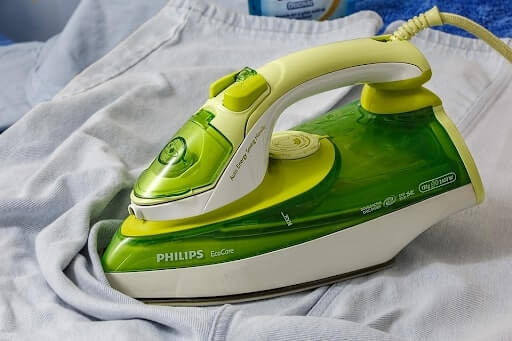
36. Place high energy appliances away from each other.
Strength in numbers works for appliances as well as people. The closer high energy appliances are to each other, the more electricity they pull because of the combined heat they emit.
37. Make sure appliances are not broken.
Broken appliances struggle to work well, if at all. The harder they work, the more electricity they pull.
38. Minimize use of exhaust fans.
Exhaust fans, commonly found in kitchens and bathrooms, suck the hot air out of the immediate areas in which they are used. That is why you should use exhaust fans sparingly and limit how much warm air your home is rid of.
Home Improvements
39. Get your entire home insulated.
Better insulation keeps the heat in, in the winter and the cool air, in the summer.
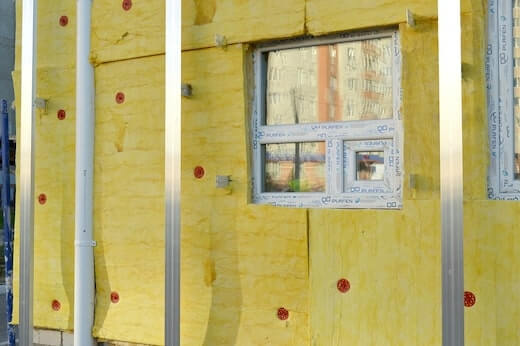
40. Reconsider adding an extension to your home.
Logic dictates that the bigger the home, the more electricity it will need. You do the math.
41. Consider moving.
Costs per kilowatt vary between regions within the United States, with the average cost of electricity at 13 cents per kWh. You may want to evaluate how your region measures up and determine whether or not the cost-benefit analysis, in this case as it relates to electricity, is worth it.
42. Learn about the electricity rates in your locale.
While increasing electricity costs are often beyond our control, it is worthwhile to become educated and understand where increases occur, and perhaps why.
43. Use ceiling fans
If you’re looking for tips on how to lower your electric bills during the summer, fans are a relatively easy way to accomplish it. Ceiling fans circulate air efficiently and use less electricity than other cooling systems.
44. Install a fan in your attic
It all starts at the top as they say, and that includes cool air from the attic that pushes hot air out of the rest of the house.
45. Use blinds and curtains to keep the sun out, or in.
When the blinds and curtains are closed in the summer, they keep the heat out and allow your cooling systems to work as they should. In the winter, opening those window treatments lets the sun shine in and warms your home.
46. Use LED light bulbs
Light Emitting Diode, or LED bulbs, are designed to save energy and therefore last a lot longer than regular light bulbs. Their use saves you money on your electric bill as well as wherever you purchase bulbs.
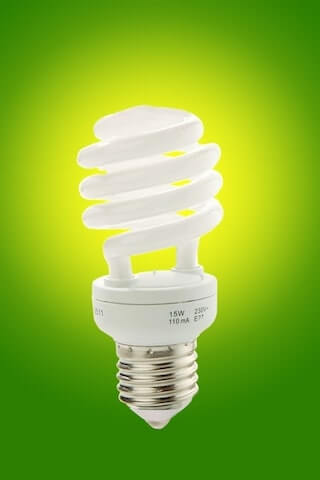
47. Wash clothing in cold water
Less hot water, less heat, less electricity, etc.
48. Use Shower heads with low flow rates.
Shower heads with low flow rates provide less water than regular shower heads. In turn, that means that less water is used, and less has to be heated.
49. Program your home’s thermostat.
Set your thermostat temperatures to go up or down at different times of the day so that you are not under or over using it at any, one time. If you’re looking for tips on how to lower your electric bill in winter in an apartment, a relatively inexpensive electronic thermostat could pay for itself in a few months—or better yet, get your landlord to install it.
50. Keep thermostat at a steady temperature.
Alternately, you can set your thermostat to remain at a steady temperature that can be changed only by those with a key or bypass code.
51. Install insulation behind switches and electrical plates.
Keep the energy in, and the cold, or hot, air out.
52. Get storm doors.
Storm doors add an extra layer of insulation, especially when greeting people at the door. You can prevent air exposure to your home, by keeping it from entering or escaping.
53. Repair cracks and leaks outside and inside.
Even the smallest cracks in your inner or outer walls can let hot or cold air leak in or out. Sometimes it is the smallest home repairs that save the most.
54. Keep windows shrink wrapped
Yet another way to keep the heat in, particularly if you do not have energy-saving windows, is by using shrink wrap.
55. Use door sweeps
These metal strips are screwed on to the bottom of outer doors in order to keep the all the elements out.
56. Seal baseboards
Like door sweeps, sealed baseboards keep out the excess air from the outside.
57. Use heat- air exchange covers with your fireplace
If you use your fireplace, your flue has to stay open. A heat and air exchange cover will keep the hot air in while keeping the cooler air out.
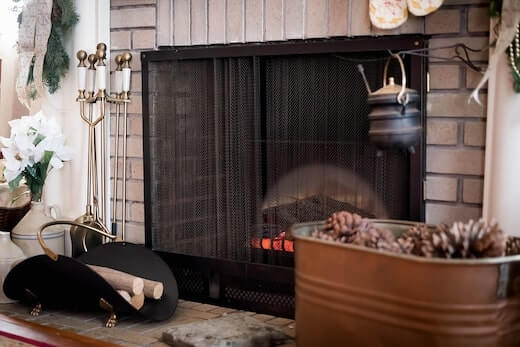
58. Heat and cool the rooms you are currently in or regularly use.
59. Lower temperatures at night.
Once you are in bed and asleep, you are less cognizant of drops in temperature. That said, they say that cooler rooms can actually improve your quality of sleep.
60. Install Energy Efficient windows
Energy Star, for example, makes windows that regulate and prevent the escape of hot and cold air, in and out of your windows.
Outdoor Improvements
These may not work for you if your trying to find how to lower your electric bill in an apartment, but if you do have land attached to your property, they can be a tremendous help.
61. Be aware of extreme weather conditions in your area.
You cannot control the weather, but you can do your part by preparing your home in advance
62. Schedule annual HVAC inspections.
Make sure your heating, ventilation, and air conditioning system is in good working order prior to when you are likely to need them. By preparing in advance you save money not only on potential repairs but by requesting services during off-peak seasons.
63. Use your landscape’s natural shading.
Trees planted near windows in your yard will provide natural shading and cooling, thereby reducing the need for air conditioning in the summer.
64. Have motion sensors determine when lights go on and off.
Keeping outdoor lights on is both a safety precaution as well as a waste of electricity. The solution? Motion sensors!
65. Use solar lighting outdoors.
Home decor and safety can be provided by the sun, even at night. Solar lighting systems absorb the sun during the day and burn until they can burn no more after the sun goes down. No wires, no electricity, no increased cost.
66. Use paint that is insulated.
Outdoor, insulated house paint can be used to provide an additional layer of cover to protect your home from hot or cold air trying to seep into, or out of, your home.
67. Grill outdoors.
Forget the microwave and the stove— grill outdoors!
68. Heat your home with rooftop solar panels.
By absorbing the sun’s energy to heat your home, you can save a lot of money on electricity. Rooftop solar panels are so effective and resourceful, that some states have mandated their use.

Other Electricity Saving Techniques
69. Take electronics out of standby mode.
Electronics that are plugged in when not in use are described as phantom loads. Though they are not being used, these plugged-in devices pull electricity and waste a whole lot of money. The easiest way to avoid these costs? Unplug what you are not using or keep your devices in sleep mode.
70. Conduct an energy audit or have the electric company do one for you.
Before you invest in energy-saving projects, it is wise to have the electric company or another qualified specialist, review and evaluate your home so you know exactly what you need to do to lower costs.
71. Use appliances when electricity rates are lowest.
By contacting your local electric company by phone or online, you can find out when peak and off peak hours are scheduled and use your appliances accordingly.
72. Dress in layers in the winter
Layering up, even at home, keeps heating costs down.
73. Use extra blankets in the winter and fall.
There is no better time to use down blankets, granny square covers, and plain old comforters than when temperatures dip.

74. Inquire about pre-paid electricity payment plans.
By pre- setting your electricity budget, you can significantly reduce both waste and cost.
75. Install a garage door opener.
Most homes don’t have HVAC vents in the garage, but it can act as a shelter against the elements. Using your garage as a sallyport to enter and leave—as opposed to your front door—can prevent heat or air condition loss. If you’re looking for solutions as to how you can lower your electric bills in the winter and the summer, this works for both. And you get a garage door opener to boot.
Efforts Up and Electricity Bills Down
There are probably a few tips and suggestions that we have listed that either do not seem realistic or frankly, sound a bit odd. You get to choose what works for you in your home because doing otherwise just decreases your chances of trying any tips at all. Good luck with whatever you choose and enjoy the cash you save.


